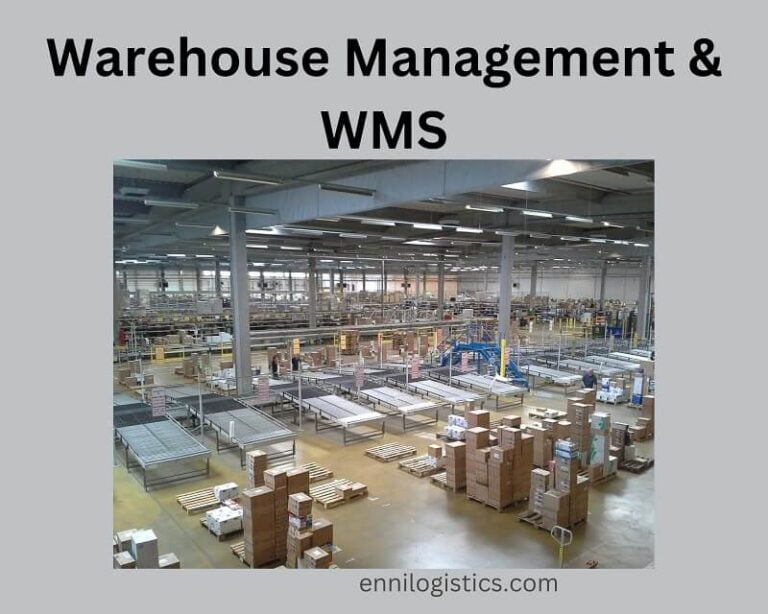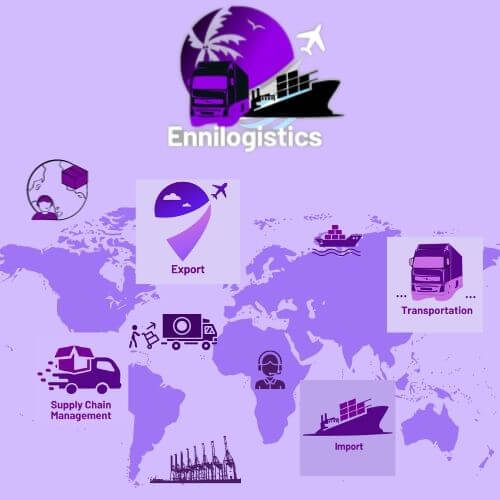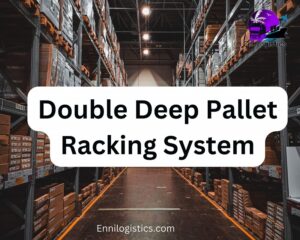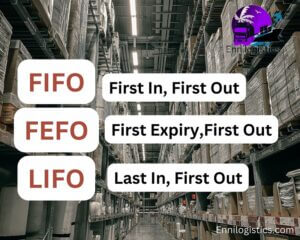What is a warehouse?
Simple meaning of a warehouse is a building that can be stores goods. Normally warehouse is a large building with storage facilities and goods handling facilities like machinery and equipment for moving the goods.
A warehouse is seeming to be a place to store goods. But it is not only a storage place but also a better solution to manage the demand and supply of goods.
Warehousing activities are involved to fulfill the shortage of material requirements on a large scale while making them available at the time when demanded.
What are the basic Functions of warehousing?
- Receiving goods from suppliers
- Issuing goods to customers
- Staging- unloading the goods from the vehicle and keeping in stage wise
- Inspection- quality and quantity
- Storage-store goods in the correct place
- Sorting- sorting the goods according to the orders
- Packing-packaging has been done according to customer requirements
- Shipping-sending to customers
Other additional activities in a warehouse
- Value added services
- Consolidation of orders
Main Objectives of warehousing?
- Make the space optimal level and efficient
- Safety and comfort of the employees (restrooms, lunch rooms, more ventilating area)
- Increase productivity and control
- Reduce operating costs (Reduce maintenance cost)
- Improve customer service and customer satisfaction (giving proper storage, with the correct temperature, value-added services)
Above we have identified a what warehouse is and the functions of the warehouse and more, then you easy to understand warehouse management. Let’s move on to warehouse management
What is warehouse management?
warehouse management is managing day-to-day activities of warehouse operation, resources, and facilities in an optimal level of the utilization of the space as well as other resources while enhancing productivity and efficiency of the warehouse at a low cost.
Warehouse management is important, please see the below reasons
Why warehouse management is important to a business?
- Reduce inventory level-more inventory means more cost. so reducing inventory means reducing costs.
- Reduce labor costs.
- Increase storage capacity.
- Increasing inventory accuracy
- Enhancing the customer satisfaction
- Reduce cost.
What are the benefits of warehouse management?
Warehouse operation is not an easy task. There is a huge process behind the warehouse customer cannot be seen. In general, warehouses need to ensure on-time delivery while keeping inventory. Staff allocating, space utilization, optimal level of storage capacity maintaining, demand forecasting communication with suppliers and customers and so many others. Fulfilling all requirements and operations providing on-time delivery and ensuring the accuracy of the order is a very complex situation. So need better management for warehouse.
Good warehouse management can be beneficial to a good supply chain. Good warehouse management can ensure delivery accuracy and on-time delivery to the right place, and to the right customer at a low cost.
On other hand, we can explain the benefits of warehousing as service benefits and economic benefits.
what are the warehouse models?
Warehouse models can be benefited in two ways, one is economic benefits and service benefits. Next, we will explain those two categories of warehouse models.
Warehouse model- Economic benefits
- Consolidation
Warehouse model-service benefits
- Spot stock
- Assortment
- Mixing
- Product support
- Market presence
What is WMS-Warehouse Management System/Software?
WMS stands for a warehouse management system. WMS is a software application that helps to manage warehouse operations or distribution centers. WMS has been designed to optimize warehouse operations efficiently and effectively. It would be a competitive advantage. WMS software used the streamline warehouse operations while effective automation and smooth flow of inventory control. WMs is software that is used for simplifying the complex process of a warehouse.
WMS software helps to reduce errors occurring in warehousing, shipping process as well as returning processes.
key Features of Warehouse Management System commonly used?
Warehouse management is involved with multiple key areas such as supply chain management, inventory management, transportation, and logistics management. WMS system provides an integrated solution for these different sectors.
WMS software solution capabilities and features vary with the solution provider or vendor. Here we are going to explain some of the essential and common features of the warehouse management system
Common capabilities/key features of WMS applications
- Inventory management
- Cycle counting
- Order allocation
- Order picking
- Packing
- Shipping
- Automated material handling equipment interface
- WMS integrated with mobile devices such as bar code and RFID scanning
- Labor management
- Returning process
- Tracking shipment
- Stock control
- Automated reporting
- Demand planning
- Warehouse mapping
- Re-gauging
- Bonded warehousing
Key elements of success WMS?
- Functionality
- Fixed price deployment
- Integration focus-powerful integration with ERP, Material handling, or other systems.
- Platform for change
Who uses WMS software?
Can be used for all sizes of businesses which is operated in a warehouse or distribution center.
What is the difference between WMS and ERP Software?
- ERP is an enterprise resources planning system. It is used for integrating all the key functions of a business.
- But the WMS system is used for warehouse Management.
- Some of the ERP Vendors are providing WMS as a module of the ERP system.
What are the different types of Warehouse Management Software (WMS)?
There are many different types of WMS available. But basically, categorized into 3 tiers below,
- 1 tier- highest level of functionality
- 2 tier-more modest capabilities
- 3 tier-mid size companies
Different types of warehouses?
- Public warehouses
- Private warehouses
- Bonded warehouses
- Distribution centers
- Cold storage warehouses
Types of cold storage warehouses?
Cold warehouse included below,
- Refrigerated containers
- Blast freezers and chillers in cold rooms
- Pharmaceutical grade -cold storage warehouses
- Freestanding cold storage warehouse
- Plant-attached cold storage warehouses
- Dedicated custom cold storage warehouse
Warehouse technologies using?
- Internet of things
- Business intelligence and predictive analytics
- Robotics and automation
- Automated guided vehicles
- Mobile and wearable technologies
- Blockchain
- Artificial intelligence
Types of Warehouse Management Systems
- As a Standalone on-premises warehouse management system
- Cloud WMS
- It can be a module of the integrated ERP system.
For example IFS ERP,
Benefits of IFS ERP with a warehouse management module.
Automated data – warehouse data collection can be done by automatically capturing data and productivity and accuracy is higher than the traditional method of data collection. And also it is easy to generate reports speedily.
User-friendly simple interface-it is a very easy-to-learn user interface. So it is saving money on staff training to staff and also staff turnover.
Maintaining a good database for warehouse management data-warehouse key transactions such as
- Receive shop order.
- Transport task
- Issue material for shop order
Mobility: support to smartphones, pcs, laptops, etc.
IFS ERP cloud-based ERP system
You may like to read,
Do You Know Top 10 WMS: Warehouse Management System 2023
What Is Bonded Warehouse: Everything You Need To Know
What Is Logistics? Explain With 7 Rights Of Logistics











1 thought on “Warehouse Management & Warehouse Management System: Everything you need to know”
Very educative